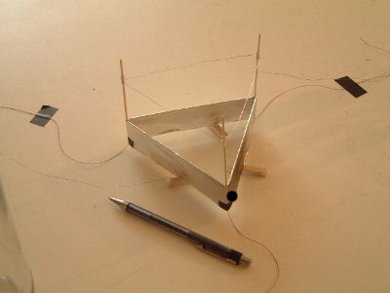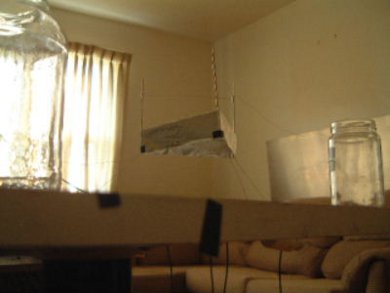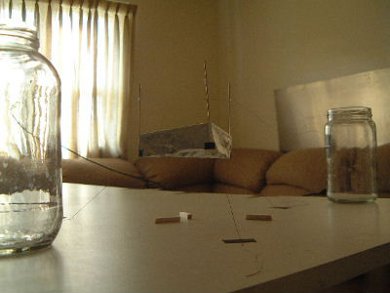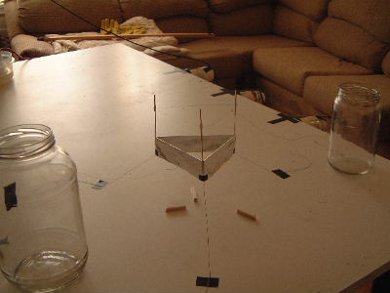Lifter/ionocraft 1b - Single triangle, 130mm edge length lifter
This device was a successful attempt on October 14, 2001 to create a larger and more stable lifter than my first one. I started out building one according to the directions on Jean-Louis Naudin's website but either my power supply was not strong enough to cause it to lift or the top edge of the foil electrode leaked too much. In either case, I decided to make a smaller one with a lighter frame design.
In this device there are no balsa wood cross members on the bottom of the foils. This is the same way that my lifter 1a was built. Also, the top edge of each foil is wrapped around its cross member and glued back onto itself. This means that there is no sharp foil edge on the edge closest to the wire thereby eliminating one source of leakage and hence allowing a high voltage to build up. This seemed obvious to do and I did it with my first lifter. To reduce leakage further, the foil is all one piece instead of being made of three individual pieces.
Another enhancement in this design is that the wire height is easily adjustable. At each vertex the wire is hot-glued to a small plastic cylinder. This cylinder, makes a snug fit with the supporting poles but is still easy to slide up and down. I could then adjust the distance between the wire and the foil so that it wasn't close enough to produce arcing between them while still producing corona and the resulting ion wind for the ion propulsion. This arcing is what had blown so many holes in the foil in my lifter 1a such that it would no longer fly since the foil's top edge was effectively no longer rounded (due to the many holes).





The following is a video showing step-by-step how to make the above lifter with the exception of how the wire is attached to the vertical supports.
